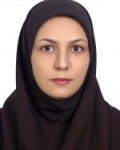| نویسندگان | ملیحه عباس زاده,محمد احترام,Ali Najah Ahmed,Vijay P. Singh,Ahmed Elshafie |
|---|
| نشریه | EARTH SCI INFORM |
|---|
| ضریب تاثیر (IF) | 2.878 |
|---|
| نوع مقاله | Full Paper |
|---|
| تاریخ انتشار | 2021-08-04 |
|---|
| رتبه نشریه | علمی - پژوهشی |
|---|
| نوع نشریه | الکترونیکی |
|---|
| کشور محل چاپ | ایران |
|---|
| نمایه نشریه | SCOPUS ,JCR |
|---|
چکیده مقاله
Copper is an essential material for electrical conductivity and is a good conductor for heat. The porphyry copper deposits
(PCD) are one of the most important resources of copper, where the determination of copper grade is one of the most important
issues. The finding complex relationship between copper grade and kind of rocks is a major change for modelers. This
study employed the adaptive neuro-fuzzy interface system (ANFIS) and multi-layer perceptron (MLP) to estimate the copper
grade in PCDs. The Henry gas solubility optimization (HGSO), weed algorithm (WA), and moth flame optimization (MFO)
were applied to set the parameters of the MLP and ANFIS models. The Iju PCD, as one of the important copper deposits
in the Kerman province of Iran, was chosen as a case study for predicting the copper grade. Three scenarios were used as
input to the models. The first scenario used the latitude and altitude of boreholes as input and the second scenario used the
longitude and altitude of boreholes as input. The third scenario used the latitude, longitude, and altitude of boreholes as input.
Results of the first scenario indicated that the percent bias of the ANFIS model was 0.26, while it was 0.19, 0.22, and 0.24 for
the ANFIS-HGSO, ANFIS-MFO, and ANFIS-WA models. The accuracy of models indicated that the integration of ANFIS
and HGSO decreased the root mean square error (RMSE)of the ANFIS-MFO, ANFIS-WA, and ANFIS models about 14%,
21%, and 27%, respectively, in the training phase in the second scenario. The RMSE for the ANFIS-HGSO was 1.98 in the
training phase, while it was 2.31, 2.45, and 2.67 for the ANFIS-MFO, ANFIS-WA, and ANFIS models, respectively, in the
third scenario. The accuracy of three input scenarios was compared with that of ANFIS-HSGO. The Mean absolute error of
ANFIS-HSGO for the third input scenario was 67% and 40% less than for the first and second input scenarios in the testing
phase. The third scenario was the best input scenario. Uncertainty analysis for all the models showed that the least value of
uncertainty belonged to the ANFIS-HGSO. This study also used an inclusive multiple model to estimate copper grade based
on providing a synergy among multiple models. The utilization of an inclusive multiple model based on the outputs of the
hybrid and standalone ANFIS and MLP models could increase the accuracy of individual models. The inclusive multiple
model and the comprehensive uncertainty analysis are the innovations of the current study.
